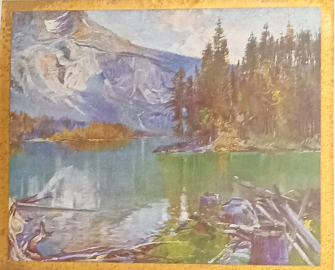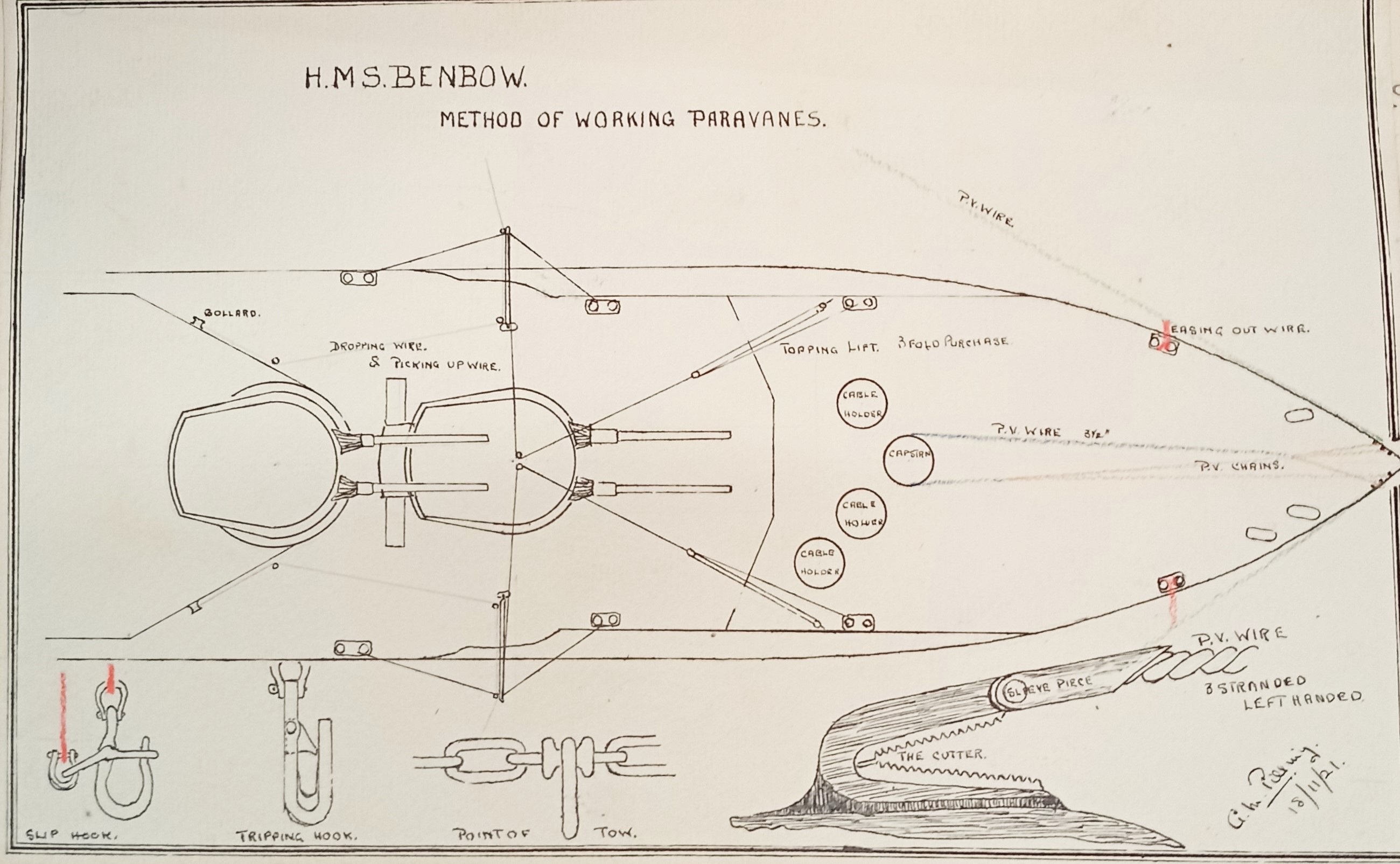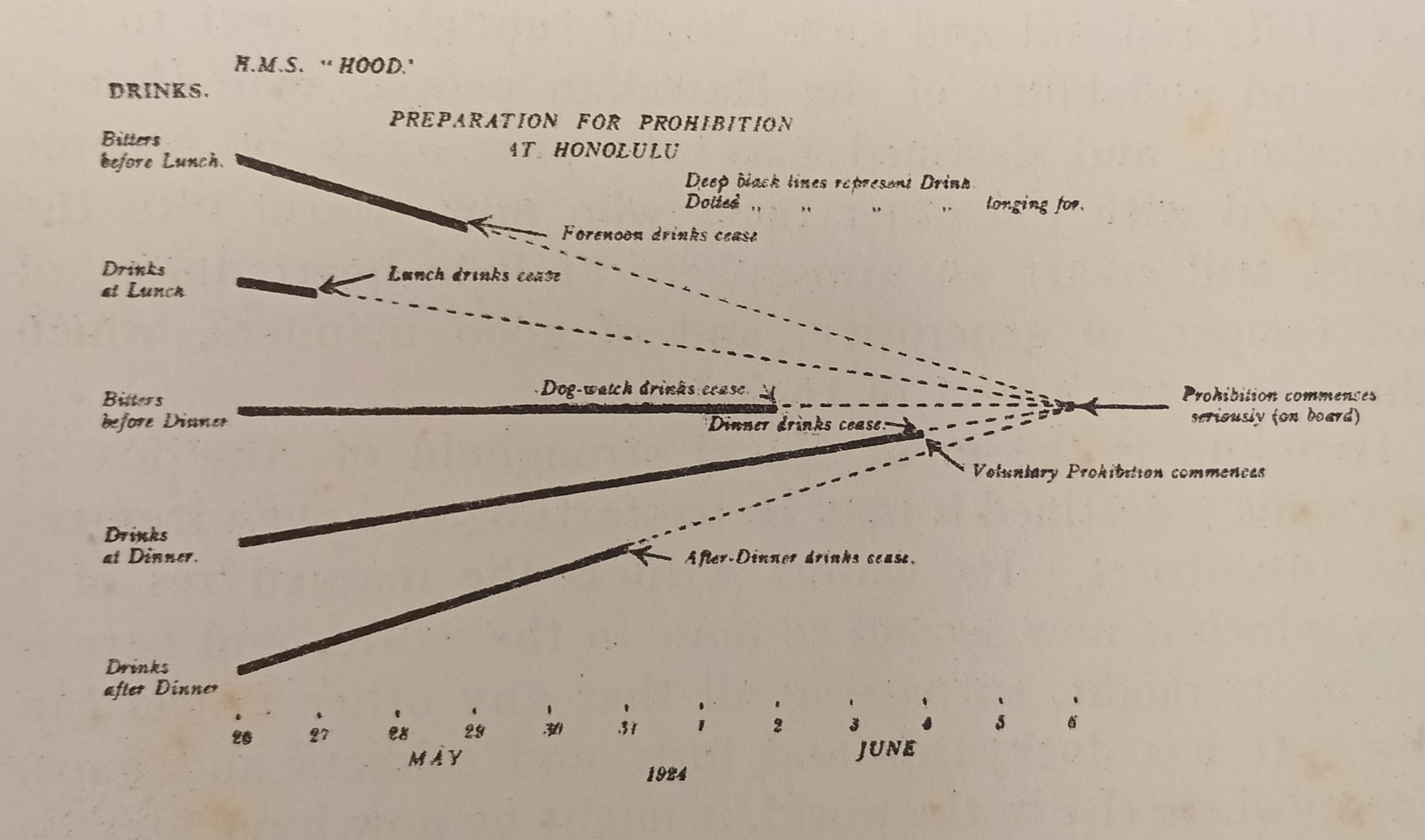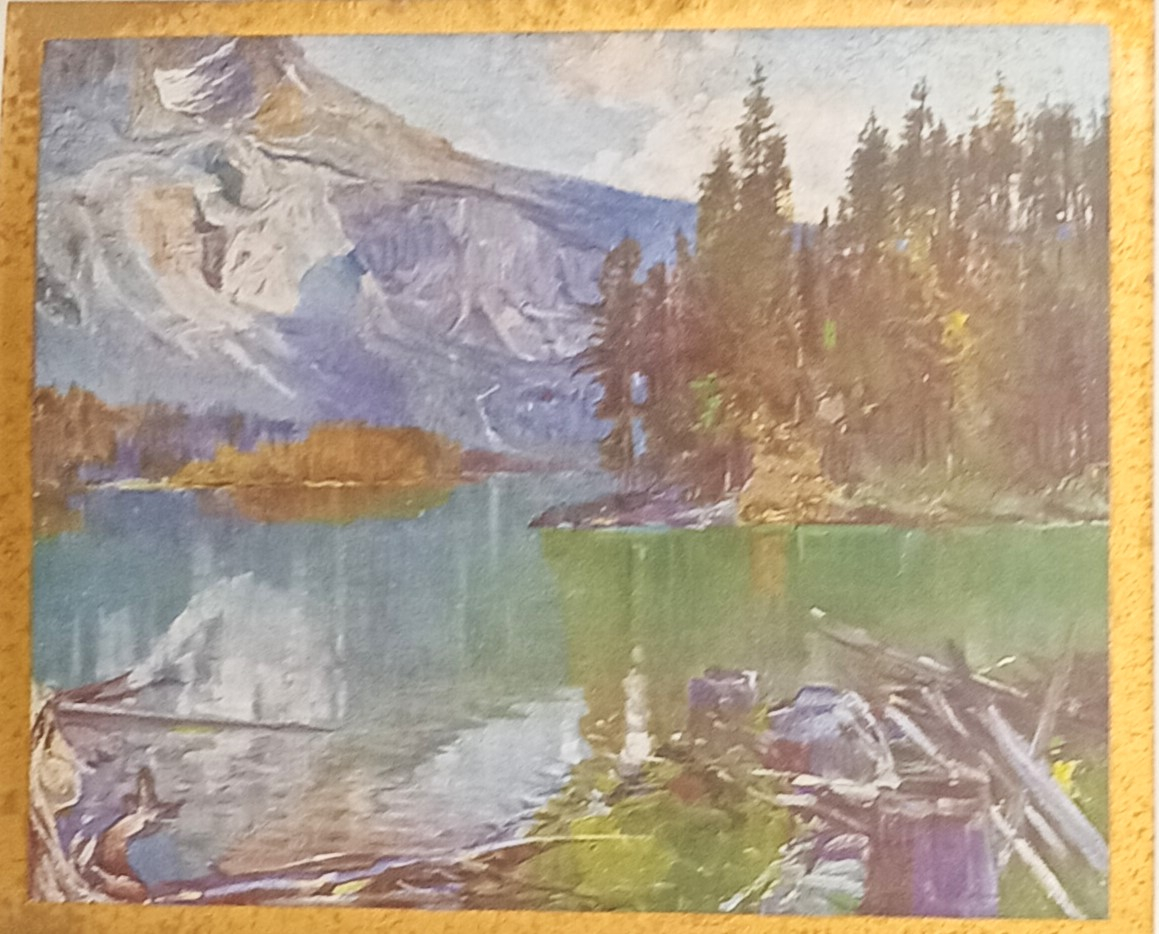British Special Service Squadron - June 1924
- View news filtered by: Interwar
- View news filtered by: Navy Organisation
- View news filtered by: Specialisms
- View news filtered by: Units & Squadrons
- View news filtered by: British Special Service Squadron
- View news filtered by type: Blog

In this ongoing blog series, the National Museum of the Royal Navy is following the route of the British Special Service Squadron during the centenary of its voyage. In this entry we discuss its travels across the Pacific Ocean to Honolulu and Canada.
At sea, crossing the Pacific Ocean: 31 – 6 June 1924
"On May 31st the weather was perfect on the quarter-deck, the trade wind that blew in our faces was deliciously cool, the sun was like gold and the Pacific as blue and tranquil as the Aegean" (Scott O’Connor, p.229)
As part of their Pacific Ocean crossing the ships of the squadron took the opportunity to complete some training exercises. These included smoke screens, high-angle (H.A) firing used for anti-aircraft defence and paravane runs. Paravanes were towed by cables from a ship to intercept mines.

The regular routines of the ships were also maintained, including divisions (or morning parade); a custom originally established to check that no-one had fallen overboard in the night. Everybody on board was supposed to attend except those who had been exempted on an ’Excused List’ for essential duties, such as emergency repairs or the galley (kitchen).
"At Divisions the Ship's Company falls in, each man according to the Division to which he belongs. The Forecastle Division usually falls in on the Starboard Waist, with the Boys next to them: on the port side are the Topmen and Stokers' Division. On the quarterdeck we find, on the starboard side the Royal Marine Detachment, and on the port side the Quarter-deck Division of the seamen. Elsewhere may be drawn up the Dayman's Division - the division which includes signalmen, wireless men, and various non-watchkeepers. After inspection by the divisional officers, they report to the Commander who in his turn, spins round and reports to the Captain, aft under the ensign - "Ship's company present, sir!" and the muster-roll is complete." (Irving, John, 1944)

After Divisions, came the morning prayers. Those who were not of the Christian faith could be excused the prayer element. The crew of the squadron did reflect different religions. For instance, a priest occasionally came onboard HMS Hood to hold a service for the men of the Roman Catholic faith, with an altar placed between the two 15-inch guns. For Jewish members of the crew, such as Wilfred Woolman serving in HMS Repulse, they had to make their own arrangements, but they were put in touch with local religious leaders when the squadron stopped. Pesach (Passover), for example, had taken place between Friday, 18 April -Saturday, 26 April 1924, while the squadron was in Wellington, New Zealand. Wilfred records having gone ashore to attend evening service on the 7th day of Pesach.
At Honolulu, Oahu, Hawaii: 6 – 12 June 1924
"For the first time since we had left England 190 days previously, our ships cast anchor in foreign waters…the sea has a broadening effect upon the mind… We became gradually disposed to dwell upon the things we had in common with other men rather than those upon which we differed." Scott O’Connor, p.232
Planned as a fuelling stop after the voyage across the Pacific, this was their first port of call outside the British Empire, a true indication of the empire’s extent after the end of the First World War. The squadron arrived off the island early in the morning, around 02:30, the ships then moved up to the harbour at Honolulu around 05:30. The squadron was escorted in by aeroplanes sent out from Pearl Harbour to greet them (they would later escort them back out as well). The entrance to the harbour was narrow but the whole squadron was able to be berthed alongside in the harbour after the ships took it in turn to enter, HMS Hood going first. The customary welcoming ceremonies were then observed, with official calls on the Governor during the day, and a formal dance attended by 3000 people in the evening.

While the squadron were relieved to be on land after 3,133 miles from Apia, the capital of Samoa, they had also been preparing to ‘go dry’. As a state of the United States of America, Hawaii was bound by the 18th Amendment passed in 1920, which outlawed the sale of alcohol. In deference to their American hosts, Admiral Field had ordered the issue and consumption of alcohol to be suspended during the stay, and alcohol had been slowly cut down during the voyage. Engineer-Captain Frank Goodwin produced a diagram for HMS Hood’s noticeboard, the thick black lines indicating drinks, and the dotted lines when they ceased (and longing for alcohol began). The custom of drinks at dinner in the mess lasted the longest, ceasing only two days prior to their arrival.

"We very quickly discovered on landing here what Prohibition really means. Alcoholic liquor cannot be obtained in public bars, yet everyone has a secret supply somewhere. Some distil their own spirit, but others obtain supplies somehow or other. We are told that there is a good deal of wood alcohol sold by the bootleggers and that it is stuff to be wary of. However, the people we met all seemed to be able to get ample supplies of good alcohol and treat it according to recipes of their own to resemble whisky or gin, vermouth etc… Corruption apparently seems rife everywhere and numbers of illicit stills have sprung up all over the place." (Wilfred Woolman, RNM 1999/31)
It was Navy Night on the evening 7 June, and the officers of the squadron were entertained by their counterparts at the Naval Base at Pearl Harbour, about 12 miles drive from Honolulu. For the Warrant Officers they were offered traditional Hawaiian food, with the menu written entirely in Hawaiian and complete with singing and hula dancing. After dinner everyone moved to an arena to watch some boxing matches. It finally ended with the anthems being sung, ‘God Save the King’ and ‘Hail Columbia’, before the visiting officers were being taken back to the ships. The following day, the brigades marched to an open-air Sunday service with salutes taken by the Governor and the massed bands of the squadron to play the hymns. Captain Charles Round-Turner, of HMS Dauntless was not impressed by the gin alternative offered as pre-dinner drinks offered before a dance at the open-air ballroom at Waikiki Park:
"...just before dinner we were…given cocktails, made of a sort of gin distilled from tea-root whatever that may be, horrid it was too!"
Finally, the official dinner took place on HMS Hood on Wednesday 12 June before the squadron departed for Canada on Thursday 13 June 1924.
At sea, heading for Canada: 13 – 20 June 1924

Esquimalt and Victoria British Columbia, Canada: 21 – 25 June 1924
After nearly a week at sea, which included night exercises, the squadron was met off the coast of Canada by HMCS Patrician (His Majesty’s Canadian Ship) on 21 June. HMS Hood, Repulse and HMAS Adelaide sailed for Victoria while the light cruisers went to anchor at Esquimalt, across the water. The Mayor of Victoria, and other local Mayors came on board HMS Hood to pay their respects to the Vice Admiral to start the official engagements. Other functions included an official dinner with a ball at Government House as well as a march through Victoria by the naval brigade from the battlecruisers and HMAS Adelaide on 23 June 1924.
22 June 1924 was Coronation Day, to mark the anniversary of the coronation of King George and Queen Mary crowned 22 June 1911. To celebrate the ships were decorated with maritime flags, known as being ‘dressed overall’. This can be done to mark any national event, but this is only done when ships are in harbour, and not when they were at sea. The ships were also open to visitors and seeing as it was a sunny day they received them in large numbers.

Vancouver: 25 June 1924
The battlecruisers and HMAS Adelaide left Victoria for Vancouver, only 89 miles away, while the light cruisers remained at Esquimalt. At Vancouver, the ships were again escorted in by aircraft and were given a 21-gun salute at Brockton Point, which sits off the Downtown Peninsula inside the main harbour entrance. The purpose of the cruise to promote the naval defence of the empire was clear to at least some of the Canadian Press. For example, while there Vice Admiral Field, in charge of the squadron, received many questions from the Vancouver Sun. One question was, ‘should Overseas Dominions directly or indirectly contribute and why?’ Admiral Field’s answer was:
"The Empire must be regarded as a whole, for if anyone of its component parts is isolated, it will affect the trade and supplies of all the others. The prosperity and existence of a sea empire rest upon its sea communications. It must keep open its trade routes in the event of war. This is every bit as important to the Overseas Dominions as it is for the Mother Country. Money contributed to Naval defence by the Dominions is expanded solely on ships which are their own property and under their own control, and only in the event of war would these ships be placed under the sole direct of the Admiralty." (Scott O'Connor, p.249)
Despite the open questions about naval defence, the officers and men appear to receive a genuine welcome from the local population. 200 men and 20 officers, under the command of Captain H.W. Parker (HMS Repulse) got the opportunity to travel for six days into the Rocky Mountains and across the wheat plains.

1 July 1924 was Dominion Day (now known as Canada Day), a national holiday in Canada, marking the signing of the British North America Act (Constitution Act) on 1 July 1867 and thus the creation of Canada. In Vancouver a Naval and Military Tournament was held which the squadron participated in. The football team from HMS Hood lost 3-4 to the Royal Canadian Mounted Police Team but won 1-0 against the Vancouver Elks. While back at Esquimalt, personnel from the light cruisers visited the local naval base.
The squadron left their respective moorings from Esquimalt and Vancouver on 5 July 1924, bound for San Francisco. The Lieutenant Governor, Walter Cameron Nichol signalled to the squadron on their departure:
"To Vice Admiral Field and Rear Admiral Brand, captains, Officers and men under your command. Not goodbye but adieu. ... Officially and personally, I tender our profound regret at your departure and wish for you all the best that life has to offer in years to come."
Come back next month to hear about the next leg of the squadron’s journey. In the meantime, if you want to learn more about the British Special Service Squadron you can search our Collection.
Search our Collection
Sources and further reading
Irving, John. Naval Life and Customs: Tradition, Lore, and Language of the Royal Navy. Sherratt & Hughes, Altringham (1944).
RNM 2015/175/4 Letters of Captain Charles Round-Turner to his wife, 1923-1924.
RNM 1981/899/240 Album kept by Stuart Bonham-Carter, HMS Delhi, page 67.
RNM 1983/1283 Midshipman's diary. Arthur Maurice Pilling; Sketch no. 52. Method of working paravanes, HMS Benbow, 1921.
RNM 1999/31. Woolman, Wilfred. Typescript transcription of a diary kept by Wilfred as Schoolmaster in HMS Repulse during the world cruise of the Special Service Squadron, 27th November 1923 - 29th September 1924. Transcript by his son Aubrey Woolman.
Scott O'Connor, Vincent Clarence. The Empire Cruise. Riddle, Smith & Duffus, 1925.